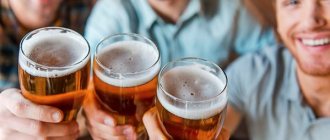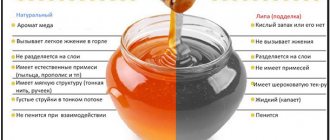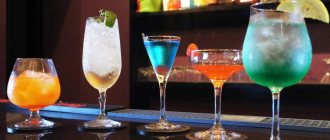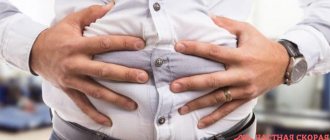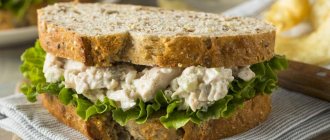Beer is very popular among the stronger half of humanity. Some athletes also love beer, although almost everyone knows that alcohol is not harmless to health, and even more so for athletes. And yet, most bodybuilders practice drinking a glass of beer, especially on Sundays. How bad this is, or maybe it’s good - we need to understand this issue.
Beer and sports
Since beer is an alcoholic drink, its consumption negatively affects the results of sports training. For bodybuilders, this is dangerous because it reduces the rate of muscle gain, reduces strength characteristics, and also slows down the recovery process. Based on research conducted by scientists, we can safely say that:
- drinking beer when you feel slightly intoxicated is equivalent to missing one workout;
- in case of obvious intoxication, a decrease in strength data should be expected, and the recovery process may last a couple of weeks;
- if beer is consumed on a regular basis, at least every other day, this leads to stagnation and a decrease in the growth of muscle tissue by 100%.
Motion Balance
The World Health Organization recommends that adults need at least 150 minutes of moderate physical activity (or 75 minutes of vigorous activity) per week. Not only training itself is considered, but also everyday activity (walking and strolling, non-sedentary work, household chores, active games with children). To reap even greater health benefits, you can increase your amount of moderate activity to 300 minutes per week (or 150 minutes of vigorous movement). You should do exercises to strengthen your muscles two or more times a week.
As for alcohol, evidence-based medicine, of course, does not call it useful and necessary, but believes that moderate alcohol consumption will not harm a healthy person who leads an active lifestyle, eats right, does not smoke, is not overweight and is not prone to addiction.
Moderate means 1-2 drinks per day for men and 1 drink per day for women. Let us remind you that 1 drink is 350 ml of five-proof beer, 200 ml of strong beer like DIPA or RIS, or 160 ml of wine.
Effects of drinking beer on bodybuilding
In bodybuilding, as in any other sport, drinking beer leads to negative effects, for example:
- testosterone levels decrease and this leads to a slowdown in muscle growth, since any alcohol and beer, including, stimulates the secretion of catabolic hormones;
- the level of potency decreases, as the level of testosterone decreases and the level of cartisol increases;
- the level of estrogen increases, since beer contains female sex hormones, and this leads to the deposition of excess fat, decreased potency, increased fatigue, slower muscle growth, decreased strength, the appearance of gynecomastia and other problems;
- excess fat is also deposited due to the high calorie content of beer;
- normal sleep patterns and recovery process are disrupted;
- sperm quality deteriorates.
From the above, it should be concluded that beer in bodybuilding has a negative effect on the training process. As for positive qualities, there are simply none.
The paradox of moderate consumption
Many studies suggest a U-shaped relationship between alcohol consumption and health. Those who drink alcohol in moderation live longer and healthier lives, while abstainers and those who abuse alcohol lag behind.
So far, science does not have a consensus on why such a relationship is observed. Perhaps it is the positive effects of the chemicals in beer and wine (or even ethanol itself), or perhaps it is the ability of moderate doses of alcohol to relax and serve as a “social lubricant.”
It is possible that the fact is that people who are able to stop after one glass have stronger willpower and better control of their desires - they exercise regularly, refuse an extra piece of cake, go to bed on time instead of the next episode of the series, and so on.
A similar correlation was found between alcohol consumption and physical activity - only in the form of an inverted U-shaped curve: a study from the US National Institute on Alcohol Abuse and Alcoholism found that moderate drinkers devoted more time to exercise and were more active than abstainers or heavy drinkers. Another interesting correlation: a review of studies published in the journal Frontiers in Psychiatry in 2015 shows that on training days people tend to drink more alcohol - the elated mood caused by endorphins (the same runner's high) is very desirable to supplement with a couple of glasses. Experts do not believe that such behavior can lead to problematic use, but they warn sports fans that they need to be more careful - take into account the calories consumed (beer is often followed by a burger) and remember that tomorrow is also a training session.
Non-alcoholic beer in bodybuilding
Naturally, drinking beer, especially non-alcoholic beer, reduces the harmful effects on the body of athletes, but not completely, since the high calorie content and high estrogen content remain.
In this regard, it can be argued that non-alcoholic beer also has a negative effect on the body due to the deposition of fatty tissue.
There is another factor that has a significant impact - the quality of both non-alcoholic and alcoholic beer. This is especially true for domestic producers, since sometimes beer prices are quite questionable, which indicates their low quality. As for European countries, the situation here is somewhat better and the quality of food products is subject to appropriate control. Despite this, even high-quality beer is not recommended for athletes if they want to achieve high results in sports.
Is it possible to drink beer before training?
Drinking beer before or during training deserves special attention.
First of all, an increase in blood alcohol content has a relaxing effect on the body in general and on physical activity in particular. Accordingly, drinking beer during training will leave no chance of even maintaining the existing result, let alone increasing it.
In addition, decreased nervous system activity and poor coordination can cause serious injury in some free weight exercises, such as various types of barbell presses. Also, insufficient nervous activity will exclude the possibility of forcing the muscles to produce a result superior to that shown in the previous workout. Thus, the presence of alcohol in the blood increases the risk of injury and reduces the likelihood of progress.
Also, when considering whether you can drink beer before training, it is advisable to take into account the calorie content of this drink. It is worth noting that the assimilation of any product requires energy expenditure, and under conditions of increased physical activity, the cost of breaking down the components of beer will cause a decrease in strength indicators.
Another aspect is the water balance, which is disturbed by the beer consumed, regardless of the type - regular or non-alcoholic.
How to properly combine exercise and alcohol
There is no complete ban on drinking beer for an athlete. Everything should be in reasonable quantities. To minimize the negative impact of alcohol on the body when regularly visiting the gym, you need to adhere to the following rules:
at least 2-3 days should pass after the last lesson - this will allow you to maintain the effect of the workout;
if beer was consumed in unlimited quantities at a gala event, it is better to give the body a rest for 5-7 days - the cardiovascular and muscular systems will have time to return to normal, and the remaining alcohol will be completely eliminated;
beer lovers should choose an appropriate snack - it should be a protein food (fish, meat or cheese);
the next morning after drinking alcohol, every effort must be made to restore water balance - at least 2 liters of mineral water, it is also advisable to take 500 mg of ascorbic acid. *all recommendations on the site must be agreed with your doctor.
Many people make a fatal mistake - they choose salted, smoked or dried fish as an appetizer. Such products create additional stress on the kidneys; the benefits even for an untrained body will be questionable. It is necessary to reduce salt consumption during this period, focus on fruits and vegetables, light foods.
A logical question would be about non-alcoholic beer. This type of drink is a stumbling block for doctors, scientists and athletes. Some claim that it contains a minimum percentage of alcohol, despite the assurances of the manufacturers and the inscriptions on the labels. Non-alcoholic beer contains complex carbohydrates, so drinking it after the gym is also undesirable.
Remember! Taking care of yourself is the key to health, beauty and effective training.
A common myth and its refutation
Many athletes answer the question “is it possible to drink beer after the gym” in the affirmative, and this is their main mistake. There is a myth that beer contains carbohydrates, which have a beneficial effect on the body during the time period when the protein-carbohydrate window is open.
Indeed, there are carbohydrates in beer, but they belong to the complex category. Instead of spending strength and energy on muscle recovery after intense strength training, the body throws away all its reserves to break down the incoming compounds. Often everything accumulates “in reserve”, that is, it turns into fat deposits. In this case, there is no point in talking about the advisability of training; it will not fulfill its intended function, will not help you lose weight and form a beautiful, fit figure.
Beer for weight loss
Alcohol is a fairly high-calorie product and a good appetite stimulant. Empty calories instantly turn into fat. It is necessary to declare war on excess weight and alcohol at the same time. Scientists say that the smallest dose of beer is harmful for those involved in sports, as it provokes fat deposition instead of burning. Dozens of hours in the gym to stay slim will result in weight gain. Beer lovers should be prepared: the effect of training may be the opposite of what was expected.
Proper post-workout stretching for girls
Plank exercise
What you need to know about the effects of alcohol
The active ingredient in any alcoholic drink is ethanol - ethyl alcohol. The intoxicating effects of various alcoholic beverages are associated with its entry into the human body. Stronger drinks contain high concentrations of ethanol (40-70%), less strong drinks, such as wine and beer, contain smaller doses (4.5-12%).
Emotional coloring of the state of intoxication
Probably every adult who has at least once taken a sip of alcohol knows that the more “concentrated” the drink is consumed, the faster the effect of intoxication occurs. By the way, about the effects. A person drinks alcohol in completely different life situations and it affects everyone in their own way. Someone's mood immediately improves and they have fun, while others feel an inexplicable sadness. There are also those who become overly aggressive and exhibit antisocial behavior. It is obvious that the emotional coloring of a person’s behavior does not depend on alcohol intake. After all, she is completely different. Alcohol only frees consciousness from boundaries and often the true “I” comes out.
Feeling worse
But, in addition to the not always acceptable emotional connotation, the state of alcoholic intoxication has many physiological aspects that do not have the best effect on the general condition of the body. This is deterioration in coordination of movements, weakness, lethargy, loss of control over speech and one’s own actions. The effects listed above are not accidental, because ethanol is a poison with a cellular mechanism of action. It is most toxic to the liver - it is this organ that is responsible for the metabolism of ethanol, that is, for its “processing” into products that can be excreted from the body.
Physiology of sports
The point of sports activities is to force the body to repeatedly perform actions that are not typical for it. After all, in everyday life, no one lifts a barbell every day or kicks a ball across a football field.
During the training, all muscles tense, blood pressure rises, and the lungs work harder, trying to pass an increased amount of oxygen. The heart works intensively, allowing more blood to flow in order to fill the tissues with oxygen and supply them with nutrients.
The human body works under stress during sports training. And this feeling continues for some period of time after the end of classes. Large overload of all organs leads to a decrease in the concentration of proteins in the blood required to increase muscle mass. As a result, the latter become weak.
Alcohol metabolism
Ethanol, having entered the stomach, is absorbed into the blood, from which it enters the liver through the portal vein. Here a series of chemical reactions occur to ensure that the poison (which is ethanol) is neutralized. There are three pathways for alcohol metabolism:
- alcohol dehydrogenase enzyme;
- through the cytochrome P 450 system;
- liver catalase.
Accumulation of harmful elements
The largest amount of ethanol is metabolized via the first pathway. The ethanol molecule is split into an acetaldehyde molecule and into the reduced coenzyme NADH. Acetaldehyde is further converted into acetic acid. During this transformation, hydrogen peroxide is formed, which is a free radical and, accordingly, the culprit of direct cellular damage.
Acetic acid itself is converted into acetyl coenzyme A, a universal substrate for your body, which can then be used for the synthesis of fatty acids. Or it can be used to produce one molecule of ATP. It would seem that this is the benefit! It turns out to be a whole ATP molecule! Don’t rush to rejoice - at least 3 ATP molecules must be spent to produce it. Total - minus 2 ATP molecules. Despite the fact that alcohol does not metabolize all at once, but as it is absorbed into the blood and enters the liver. And the amount of energy and substrates needed to metabolize alcohol is limited.
What's bad about alcohol? Drank in the evening - in the morning for training
Strength training is a stress on the cardiovascular system, gastrointestinal tract and lungs. All organs are working to the limit, and they need time to recover. When you also spend energy trying to get rid of ethanol and decomposition products, expect problems!
Alcohol:
- reduces energy reserves;
- impairs coordination and reaction speed;
- leads to dehydration;
- depresses the central nervous system;
- increases the pain threshold;
- destroys muscle fibers and slows down the formation of new ones.
In addition, alcohol is very high in calories. If you also eat plenty of snacks, the extra pounds will soon remind you of themselves.
Alcohol is not a stimulant, it does not increase endurance, but acts as a relaxant. Therefore, exercising after drinking alcohol is difficult and pointless.
